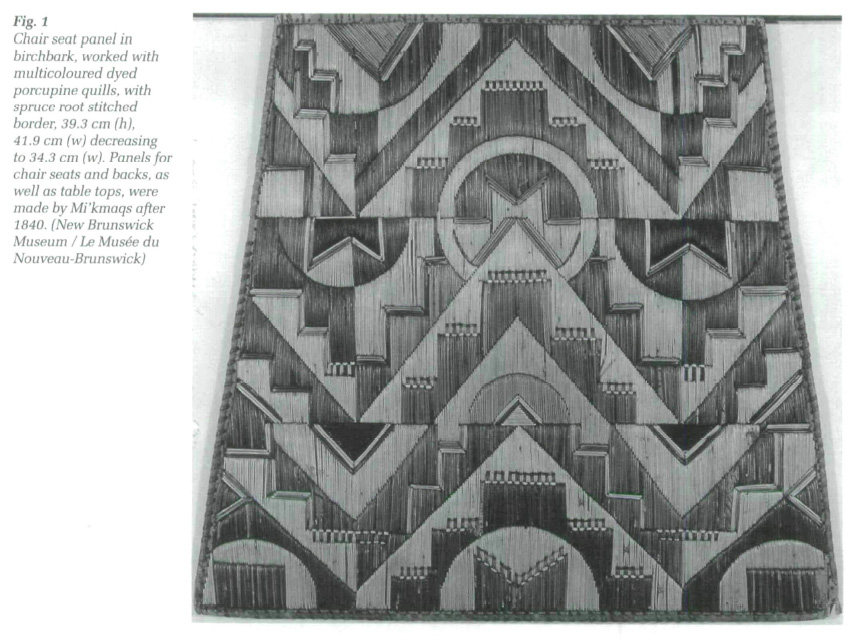Notes and Comments / Nouvelles brèves
Research Query:
Mi'kmaq Quillwork Furniture
1 A paper is being researched on the subject of Mi'kmaq quillwork furniture from Atlantic Canada. The Mi'kmaq Indians are well known for their heritage in working porcupine quills; many nesting sets of boxes are collectors' items for public institutions and private individuals alike. Less well known are the quilled chair seats and back panels, which were made by the First Peoples for the European trade. Production of these particular wares commenced around 1840 in response to the souvenir and export markets, and continued in favour into the next century. Chair seats were made in sets toward the latter part of the nineteenth century and many have found their way into museums throughout the world (Fig. 1). The Nova Scotia Museum has several chairs and a table embellished with skilfully crafted quilled panels, as do the New Brunswick Museum and the McCord Museum of Canadian History in Montreal (which currently exhibits a miniature side chair with quilled seat). The Canadian Museum of Civilization and the Royal Ontario Museum also have fine examples of quilled furniture. Extensive research in Europe and the Pacific by Ruth Whitehead from the Nova Scotia Museum has resulted in the location of certain items of furniture including workboxes, cradles and tables. Cradles with quilled exteriors are well known, such as the example in the DesBrisay Museum, which was worked by Christina Morris in the late 1860s.
 Display large image of Figure 1
Display large image of Figure 12 It is believed that furniture decorated in quilled panels is the product solely of Nova Scotian Mi'kmaqs, but these peoples also inhabited the eastern shore of Quebec and New Brunswick, Prince Edward Island and the northern shore of the Bay of Fundy. However, no quilled furniture appears to have been made in these areas. It is possible that other First Peoples made such articles. Indeed, Maliseets occupying the Saint John River Valley area were in close proximity to neighbouring Mi'kmaqs and shared some of their neighbours' artistic abilities. A merchant's advertisement in the August 3rd 1861 New Brunswick Courier claimed "The Micmac & Meicete [sic] Indians of Acadia have long been celebrated as the most accomplished artists in porcupine quill and fancy bead work" and offered for sale a variety of wares including spectacle cases, dinner mats, and card receivers. There is no mention of furniture, but it is interesting to confirm the participation of the Maliseets in this decorative arts tradition.
3 Kings Landing Historical Settlement would like to know more about the history and use of Mi'kmaq quillwork furniture. Readers who are aware of any examples of such artifacts and documentation in both public and private collections are invited to write Jenny Cook, Curatorial Research Associate, Kings Landing Historical Settlement, P. O. Box 522, Fredericton, New Brunswick, E3B 5A6.